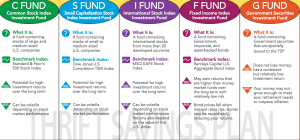 Part 4 of The DoD Blended Retirement System: Leading up to the Decision
Part 4 of The DoD Blended Retirement System: Leading up to the Decision
The new Blended Retirement System (BRS) will be a combination of a “defined benefit plan” and a “defined contribution plan”. Knowing what these two terms mean is very important. See below examples.
Defined Benefit is what the current (soon to be “old”) High-3 retirement plan is. If active duty servicemembers retire at 20 years they will receive a “defined benefit” for the rest of their lives. The biggest difference between the High-3 plan and the BRS is that the defined benefit is changing. Instead of 20-year retirees receiving 50% of their base pay, it will be reduced to 40% at 20 years (or an overall 20% reduction in retired pay).
Defined Contribution refers to the contributed funds which are deposited into an investment account, in this case TSP deposits. This “contribution” is currently unmatched by the Department of Defense. Those who are contributing to the TSP now are doing it without an advantage of matching contributions; however, there will be a matching contribution with the new BRS.
Knowing more about the TSP is important – it is a BIG part of the new BRS. The TSP is fairly easily explained – the TSP is a made up of 5 funds, G, F, C, S, and I fund and then the L Fund, which is a mix of all the funds and my personal favorite. These funds are explained below.
- G FUND – Government securities (specially issued to the TSP) are interest income without risk of loss of principal
- F FUND is Government, corporate, and mortgage-backed bonds to match the performance of the Barclays Capital U.S. Aggregate Bond Index
- C FUND – Stocks of large and medium-sized U.S. companies to match the performance of the Standard & Poor’s 500 (S&P 500) Index
- S FUND – Stocks of small to medium-sized U.S. companies (not included in the C Fund) to match the performance of the Dow Jones U.S. Completion TSM Index
- I FUND – International stocks of more than 20 developed countries to match the performance of the MSCI EAFE (Europe, Australasia, Far East) Index
- L (Lifecycle) FUNDS Invested in the G, F, C, S, and I Funds to provide professionally diversified portfolios based on various time horizons, using the G, F, C, S, and I Funds. Asset allocation shifts as time horizon approaches to reduce volatility
Note: these definitions come directly from the TSP.gov website. With the exception of the G-fund, which cannot lose principal, all funds are subject to market risk.
I encourage you to learn more about each fund and the Lifecycle funds. Here is a great overview: information card about each fund. Also, see the links below for in-depth info on each fund.